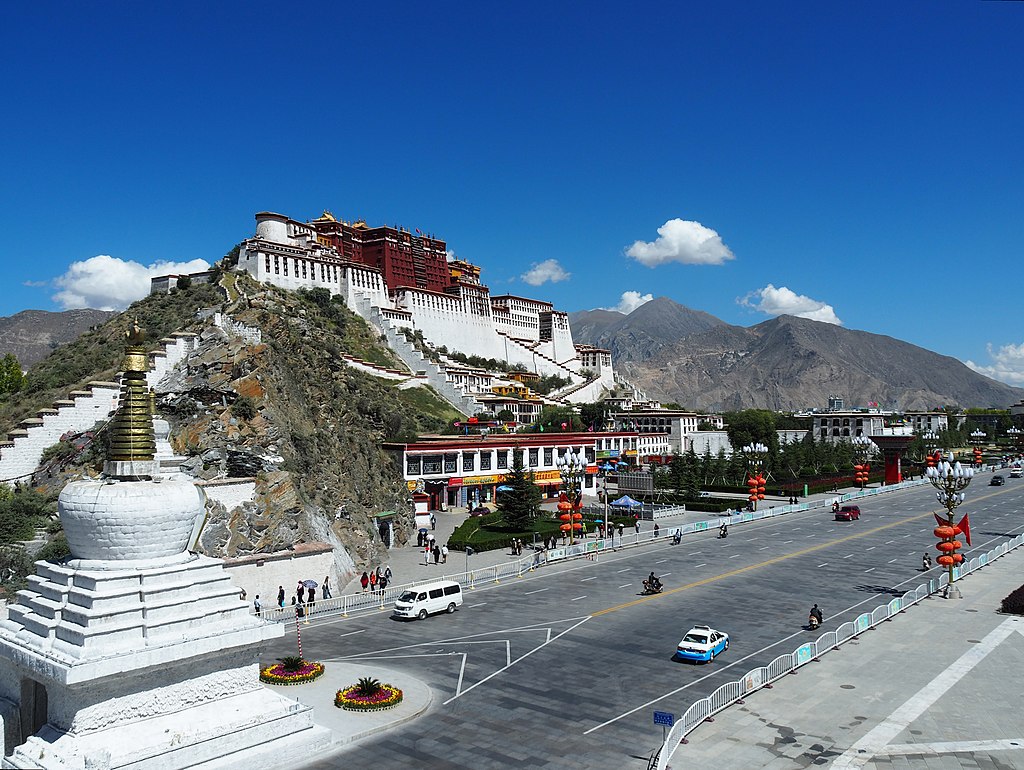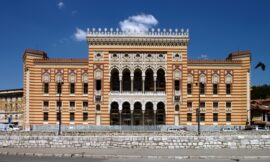The Potala Palace, an architectural marvel nestled in the heart of Lhasa, Tibet Autonomous Region, stands as a testament to the grandeur of Tibetan culture, history, and spirituality. Perched atop Marpo Ri (Red Mountain), the palace rises majestically above the city, commanding attention with its imposing structure, intricate design, and profound significance in Tibetan Buddhism.
Originally constructed in the 7th century by King Songtsen Gampo, the Potala Palace underwent several expansions and renovations over the centuries, ultimately evolving into the iconic structure that we see today. It served as the winter residence of the Dalai Lamas, the spiritual and temporal leaders of Tibet, as well as the seat of Tibetan government and administration.
The palace complex comprises two main sections: the White Palace, which served as the administrative center of the Tibetan government, and the Red Palace, which housed the sacred religious chambers, chapels, and stupas. These sections are interconnected by a network of stairways, corridors, and courtyards, creating a labyrinthine structure that spans over 13 stories and covers an area of more than 130,000 square meters.
The architectural style of the Potala Palace is a unique blend of Tibetan, Indian, and Chinese influences, reflecting the diverse cultural heritage and religious traditions of the region. The palace is adorned with intricately carved wooden beams, colorful frescoes, and ornate decorations, showcasing the finest craftsmanship and artistic skill of Tibetan artisans.
One of the most iconic features of the Potala Palace is its striking exterior, which is painted in vibrant shades of red, white, and gold, symbolizing the purity, wisdom, and compassion of Tibetan Buddhism. The palace is crowned by a series of gilded rooftops, pagodas, and golden spires, which glitter in the sunlight and create a dazzling spectacle against the backdrop of the Himalayan mountains.
Within the walls of the Potala Palace are a treasure trove of priceless artifacts, religious relics, and sacred artworks that offer insights into Tibet’s rich cultural heritage and spiritual traditions. The palace houses a vast collection of Buddhist scriptures, thangka paintings, statues of Buddhist deities, and ritual objects, as well as the tombs of past Dalai Lamas, which are revered as holy pilgrimage sites by Tibetan Buddhists.
The Potala Palace is not only a symbol of Tibet’s spiritual and cultural identity but also a UNESCO World Heritage Site and a popular tourist attraction, drawing visitors from around the world who come to marvel at its beauty, explore its labyrinthine halls, and learn about its storied history. Guided tours of the palace allow visitors to discover its rich heritage, marvel at its architectural splendor, and gain a deeper understanding of Tibetan Buddhism and culture.
In addition to its cultural significance, the Potala Palace also serves as a symbol of resilience and perseverance for the Tibetan people, who have faced numerous challenges and hardships throughout their history. Despite political upheavals, cultural revolutions, and natural disasters, the palace has stood as a beacon of hope and inspiration, reminding Tibetans of their rich cultural heritage and spiritual legacy.
In conclusion, the Potala Palace is a testament to the enduring legacy of Tibetan culture, history, and spirituality. Its majestic beauty, intricate design, and profound significance make it one of the most iconic landmarks in the world, capturing the hearts and minds of all who behold its splendor.



